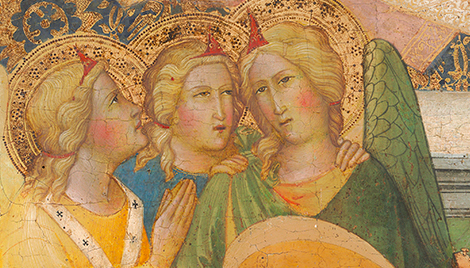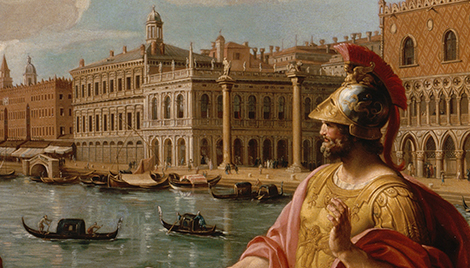Our Founder
Samuel H. Kress
The life of Samuel Henry Kress (1863-1955) falls naturally into three stages: the hard-won struggles of his youth in rural Pennsylvania, the brilliance of his mercantile success with the S.H. Kress & Company variety stores, and the extraordinary philanthropy associated with both the distribution of his incomparable collection of European paintings and sculpture to scores of art museums across the land and with the Kress Foundation’s philanthropic programs. The Kress story, once familiar to most Americans, has been said to epitomize American opportunity and the virtues of stern discipline, vigorous hard work, and populist generosity.
Samuel Henry Kress, date unknown.
Samuel H. Kress Foundation ArchiveSamuel Kress had already passed his 65th birthday when, in 1929, he established the Foundation that bears his name. With the same dedication that marked the creation of his commercial empire, he had recently planted the seeds of what would eventually become a major collection of Italian Renaissance art. Between 1929 and 1961, Samuel Kress and the Kress Foundation (with the participation of his brothers Claude and Rush) assembled and distributed across the United States the 20th century’s foremost collection of Old Master paintings and other European works of art.
For more information about the life of Samuel H. Kress, see the Biographical Note in the Samuel H. Kress Foundation Archive Finding Aid.
S.H. Kress & Company Stores
Before the establishment of the Kress Foundation in 1929, Samuel H. Kress was already a recognized benefactor to as many as 200 communities in more than half the states of the Union. On Main Streets all across the nation, the vast retail empire of S.H. Kress & Company, established in 1896, operated a chain of five-and-ten cent stores purveying affordable, durable and cheerful domestic merchandise. Designed to exacting company standards, the handsome Kress stores were cherished not only for their quality merchandise but also as prominent local landmarks. The downtown 'Kress's' were celebrated beacons of prosperity and progress, exemplars of urban architectural design, and sources of municipal pride.
S.H. Kress & Company Store, Birmingham, AL
National Building MuseumThe most distinctive and best remembered Kress stores are a group of more than fifty Art Deco buildings dating from 1929–1944 and designed by Edward F. Sibbert (1899-1982), the company's longtime chief architect. Sibbert's buildings streamlined the Kress image by using sleek modern facades, simple yet distinctive ornament, and colors characteristic of the Kress brand. Curved glass display windows led the shopper through heavy bronze doors into an interior of rich marbles, fine woods, and large customized counters set crosswise down a long sales floor. Well-positioned hanging lamps created a bright atmosphere for an endless array of inexpensive items (there were 4,275 different articles on sale in 1934). Everything – from the constantly restocked merchandise to the gracious retiring rooms and popular soda fountains in the basement – encouraged customers to linger. Like the great movie houses of the day, the “dime store” – and ‘Kress’s’ in particular – was a popular destination during hard economic times.
Each Kress store was a gift of civic art to its community. Grandest of all was Edward Sibbert's masterpiece, the Kress flagship store at the corner of Fifth Avenue and 39th Street in New York City, opened in 1935. A seven-story marble structure designed for every shopping comfort, its Art Deco elegance was graced with Mayan-style hieroglyphs of goods for sale on the exterior and airborne Mayan gods in relief on the sales floor. Awarded a gold medal for architectural quality, the store represented the zenith of the Kress empire in luxury, modernity, and retailing capacity. In December 1938, it was also the locale of the most astonishing Christmas display in the history of Fifth Avenue – Samuel Kress's recent acquisition of Giorgione's Allendale Nativity, placed on view for holiday shoppers. Like most of the Kress stores across the nation, the Fifth Avenue emporium was supremely successful, and its demolition in 1980 marked the end of an American era.
S.H. Kress & Company flagship store on Fifth Avenue in New York City.
New York Public LibraryOnce neglected by architectural historians, the study of 20th-century commercial architecture is now receiving the attention it deserves. The National Building Museum in Washington, DC stewards the archives that document the building history of 221 Kress stores in 28 states and has also published A Guide to the Building Records of S. H. Kress & Co. 5-10-25 Cent Stores at the National Building Museum (1993). For more information about the history of S.H. Kress & Company stores see America’s 5 & 10 Cent Stores: The Kress Legacy by Bernice L. Thomas (1997).





